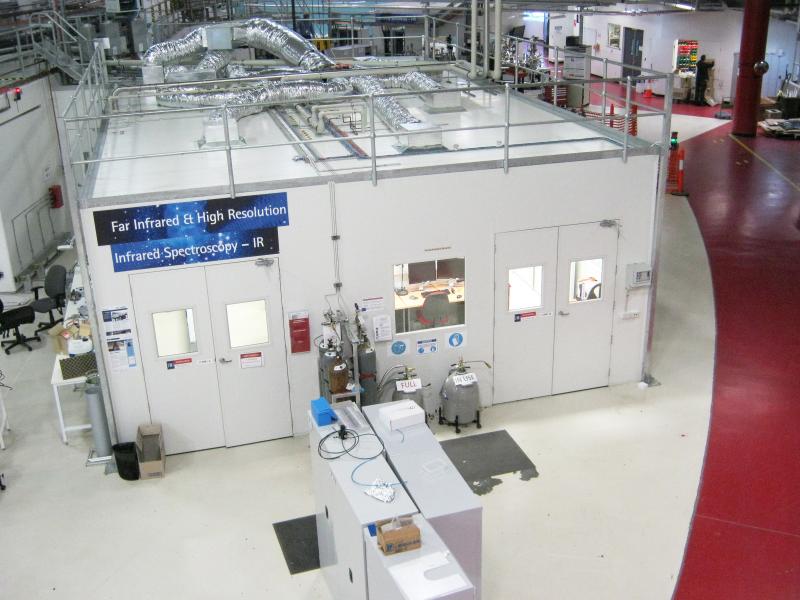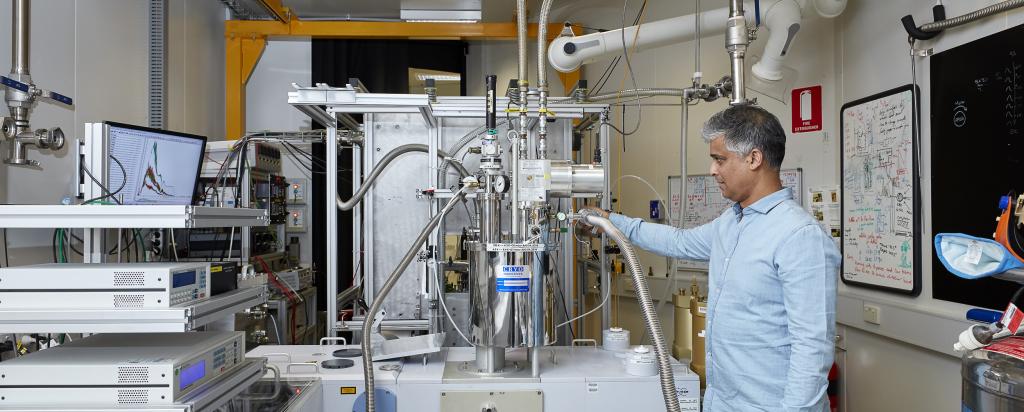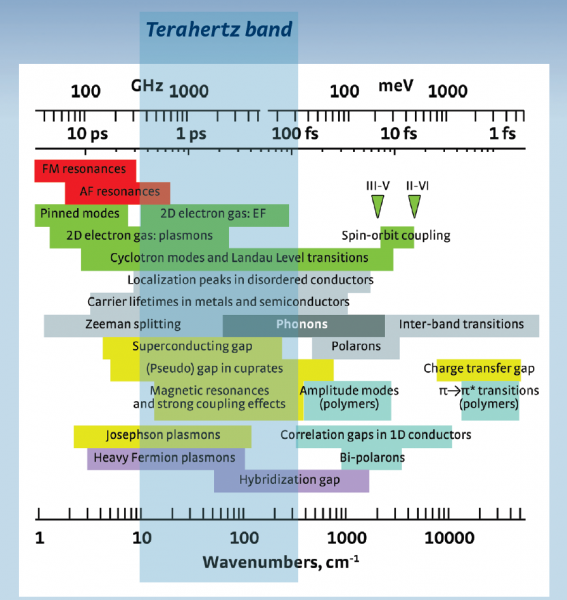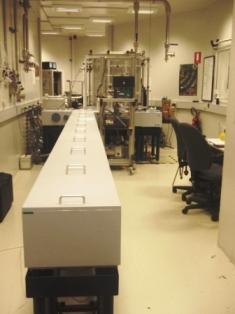

THz - Far Infrared
Introduction
The THz/Far-IR Beamline is coupled to a Bruker IFS 125/HR Fourier Transform (FT) spectrometer.This instrument can be connected to a multitude of accessories and components, allowing a variety gas and condensed phase experiments (see Samples) to be conducted across a wide spectral range: THz – visible frequencies.
Why would you use this beamline?
Synchrotron light has a number of unique properties:
- Wide spectral coverage: synchrotron light is emitted with energies ranging from microwave to hard x-rays.
- High brightness: synchrotron light is extremely intense (hundreds of thousands of times more intense than that from conventional x-ray tubes or Globar sources), enabling quick experiments on low concentration/thin samples, e.g. weak IR absorbers, gases with low vapor-pressures, thin films, isotopes in small abundances.
- Collimated: The lightsource at the Australian synchrotron is roughly 400 microns in diameter and thus can be treated as a point source. The beam can therefore easily be collimated allowing for high spectral resolution (FIR & HR beamline).
- Highly polarised: the synchrotron emits highly polarised radiation (elliptical for the bend magnet radiation and radial for the edge radiation); linear, circular or elliptical. This minimises background scattering, improves sensitivity and enables measurement of circular dichroism and ellipsometry.
Combining a Fourier spectrometer capable of achieving ultra high spectral resolutions with the highly collimated and intense source of the synchrotron creates an ideal instrument to measure the rotational spectra of gases. The high intensity of the source also means it is ideal for the study of thin samples in transmission or reflection, where the optical path of interaction is very small. In addition, as the beam displays a high level of polarisation, it is also excellent for the study of samples with oriented IR absorbing bonds (these studies require sample holders with angle adjustments; see Samples).
Data formats & Analysis Software
The Bruker IFS 125/HR FTIR spectrometer uses OPUS version 6.5 software. This software is used to operate the instrument and to analyse the data. Data is saved in Bruker specific formats. As a user on the FIR & HR beamline you will be provided with a copy of OPUS v.6.5 to analyse your data. You will be shown how to use most software features over the course of your beamtime. In addition, it is possible to convert Bruker data formats to text files (XY data) to open in spreadsheet programs such as Microsoft Excel.
Please remember to take a copy of all data recorded at the beamline. We suggest you bring either blank DVDs, a large memory stick (4GB and upwards) or portable hard drive to collect your information. By default, User data will be archived until the data is published or upon request.
Links to other THz/Far-IR beamlines:
- SOLEIL - Ailes
- Canadian Light Source
- Maxlab Beamline73
- UVSOR - BL1B
- BESSY - IRIS
- Singapore Synchrotron Light Source
- Metrology Light Source Beamline5
- Elettra
- ANKA
- Brazilian Synchrotron Light Laboratory
- Diamond
Applications
Gases
- with low vapour-pressures
- cases where only small amounts of gas can be obtained either because they are hard to synthesise or they are expensive
- Molecules with small absorption coefficients or with weak modes of vibration
- Environment/Atmosphere
- Isotopes with low natural abundances
Surfaces
- Samples with oriented bonds
- Thin films
Materials
- Nanomaterials
- Phonons
Cultural Heritage
- Pigments and other artists materials
Forensic studies
- Proteins
- Explosives
Protein higher order structures
Find out more the SAXS/WAXS User WikiView the Wiki






